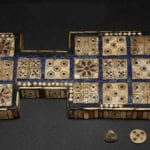 Miscellaneous
Miscellaneous  Miscellaneous
Miscellaneous  Animals
Animals 10 Strange Attempts to Smuggle Animals
 Travel
Travel 10 Natural Rock Formations That Will Make You Do a Double Take
 Movies and TV
Movies and TV 10 Actors Hidden in Your Favorite Movies
 Our World
Our World 10 Science Facts That Will Change How You Look at the World
 Pop Culture
Pop Culture 10 Incredible Female Comic Book Artists
 Crime
Crime 10 Terrifying Serial Killers from Centuries Ago
 Technology
Technology 10 Hilariously Over-Engineered Solutions to Simple Problems
 Miscellaneous
Miscellaneous 10 Ironic News Stories Straight out of an Alanis Morissette Song
 Politics
Politics 10 Lesser-Known Far-Right Groups of the 21st Century
 Miscellaneous
Miscellaneous 10 Undeniable Signs That People’s Views of Mushrooms Are Changing
 Animals
Animals 10 Strange Attempts to Smuggle Animals
 Travel
Travel 10 Natural Rock Formations That Will Make You Do a Double Take
Who's Behind Listverse?

Jamie Frater
Head Editor
Jamie founded Listverse due to an insatiable desire to share fascinating, obscure, and bizarre facts. He has been a guest speaker on numerous national radio and television stations and is a five time published author.
More About Us Movies and TV
Movies and TV 10 Actors Hidden in Your Favorite Movies
 Our World
Our World 10 Science Facts That Will Change How You Look at the World
 Pop Culture
Pop Culture 10 Incredible Female Comic Book Artists
 Crime
Crime 10 Terrifying Serial Killers from Centuries Ago
 Technology
Technology 10 Hilariously Over-Engineered Solutions to Simple Problems
 Miscellaneous
Miscellaneous 10 Ironic News Stories Straight out of an Alanis Morissette Song
 Politics
Politics 10 Lesser-Known Far-Right Groups of the 21st Century
Top 10 Current Tabletop Role-playing Games
I’ve been a role-playing gamer for more than 30 years, and I’ve been to more conventions and play days than I care to remember. I’ve seen the best and the worst of the gaming industry. I’ve been there for the highs and the lows. This list is compiled based solely upon my observations, nothing more. If anyone can provide real-world data to disprove what is here, then you’re a bigger geek than me.

Hundreds of years in the future, the Earth undergoes a dramatic change. Intersections of ley lines (lines of magic energy that crisscross the globe) tear Rifts in space-time, opening a passage to other places, times, and dimensions. Through these portals come dimensional beings or D-Bees. With the appearance of the Rifts also comes magical power, and magic and technology often collide in the world of Rifts. It is not unusual to see an elf armed with an automatic weapon, or a wizard facing an army of robots.
Rifts is a world where anything can happen, and typically does. Japan has become the cyberpunk society that science-fiction has always portrayed it as being. South America suffers a plague of vampires. Atlantis has risen from the waves once more. Europe is again a vast wilderness opposed by an empire of gargoyles. Africa has returned to nature, making it once more a wild and dark continent. China is overrun by demons. In North America, the Coalition States are the primary power. Australia has been flooded by a great inland sea, and with the return of magic, the Aborigines have enjoyed a resurgence. Even the depths of the ocean are no haven in Rifts, as the Lord of the Deep battles the Whale Singers and the New Navy for the fate of the planet.
So with all this great setting and story, why is Rifts #10 on the list? Simply put, it’s all in the mechanics. Most people will be quick to tell you that while Rifts is a great setting with wonderful backstory and the potential for years of play, the mechanics quickly kill the enjoyment. Each supplement that is released features more powerful options than the previous one, and many of the more attractive role-playing options are left behind by the ever-present advance. Coupled with the fact that the rules are inconsistent even within their own setting, the whole can make it difficult to enjoy. Imagine playing a modern-day human with no magical powers or supernatural abilities while your buddy plays a dragon. That’s the kind of disparity that is seen in Rifts games.

The World of Darkness is White Wolf Publishing’s role-playing game of supernatural horror. It takes place in a universe where vampires, werewolves, and other icons of horror exist simultaneously and interact with one another (often violently). The primary books in the collection are the World of Darkness core rules, Vampire: the Requiem, Werewolf: the Forsaken, and Mage: the Ascension. There are also a number of other books that have been made available, including settings that take place in other periods of history.
So, horror role-playing, rich backstory – why is it only #9? There are two reasons. First, the original role-playing game was quickly overshadowed by the live-action variant called Mind’s Eye Theater. Secondly, in late 2003, White Wolf stopped publishing books for the line, ending the setting in an event called The Time of Judgement.
Some campaigns continue, but by and large, the role-playing game is seen less and less often these days, and even the live-action game is starting to become scare outside of conventions.
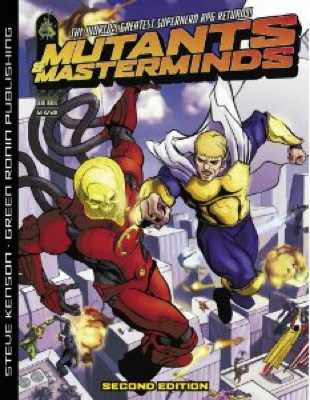
Mutants & Masterminds is a breakthrough super-hero role-playing game from Green Ronin Publishing. Based off the wildly successful d20 System from Wizards of the Coast, Mutants & Masterminds has since grown into its own and fills its niche beautifully. It has transformed from a variant of d20 into a system all its own, custom-designed to handle the mechanics of super-powered role-playing.
The system is flexible enough to allow you to play any kind of character imaginable, from an everyday beat cop to a paragon with world-shaking abilities. Moreover, it is well-balanced such that characters of an equal power level are more or less on equal terms, even if one has godlike abilities and the other is largely skill-based with a few gadgets thrown in. And more recently, Green Ronin has partnered with DC Comics to bring forth the DC Universe role-playing game, powered by Mutants & Masterminds.
The reason it sits at #8 is simply because there isn’t a lot of love for super-hero games these days. In the early years of role-playing, there were a great many super-hero game systems, but these days, Mutants & Masterminds pretty much stands alone in the field. It is a great game, just suffering from a lot of competition and a lack of interest.
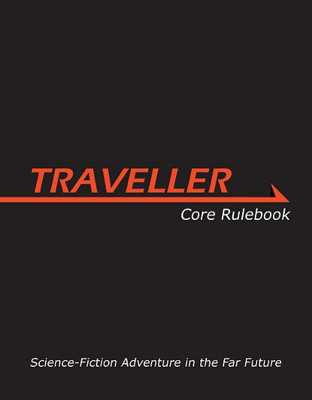
Traveller is a classic science-fiction role-playing game, and by classic, I mean that it was there at the beginning. Many of us veterans can recall our first experience with Traveller, and in many cases, it meant suffering a character that perished during the creation phase. Yes, Traveller was unique among its peers in that character creation was half the fun and that there was a significant risk of a character dying before ever making it to the table!
Traveller is one of the few systems that evolved, but never really died. It changed form, adapted, and the timeline advanced, but the setting itself remained what it always had been. And now, more recently, the classic Traveller is back, thanks to Mongoose Publishing! The newest ruleset harkens back to the old days, when character creation was something that took a while. The sudden death aspect has been removed (though you can reinsert it if you wish) and a few things have been streamlined, but this is the Traveller that I grew up on.
But why is it only #7? The same reason that Mutants & Masterminds is so low on the list. It suffers from a lot of competition and the science-fiction genre is low on the interest scale right now. But this game is generating a lot of good press, particularly among role-playing veterans, so look for it to undergo a resurgence.
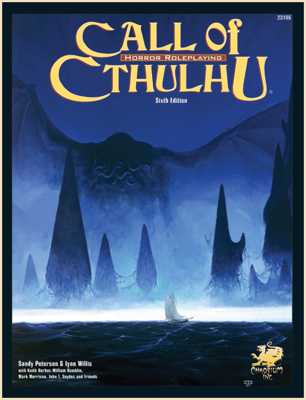
Call of Cthulhu is based on the works of H.P. Lovecraft, an author of the 1920s who specialized in horror. The original game, produced by Chaosium, was set in the 1920s and featured ordinary humans that went up against some very extraordinary foes. Many times, they would face minor beings from other worlds or dimensions, or the occasional group of human cultists, but just as often, their foe would be a creature from beyond space and time, too powerful for them to ever truly defeat. Call of Cthulhu is very much a game of settling for winning the battle, but not the war.
If there’s no chance of success, then why play? Well that’s the fun of it, you see. It’s not about defeating the darkness, it’s about surviving it and overcoming the odds. It has been jokingly said that the longest-lived characters in Call of Cthulhu have the highest movement rates, and there is some truth to that. Knowing when to turn and run can be every bit as valuable as an ancient incantation. And remember, you don’t have to outrun the monster; you only have to outrun the slowest member of your party. I have witnessed groups maiming each other’s characters to avoid being devoured.
I place Call of Cthulhu at #6 because it still remains a staple at gaming conventions. It is by no means the most popular role-playing game out there (it takes a special kind of player to adapt to the style of gaming it entails), but it maintains a loyal following and is still supported by it’s company today.
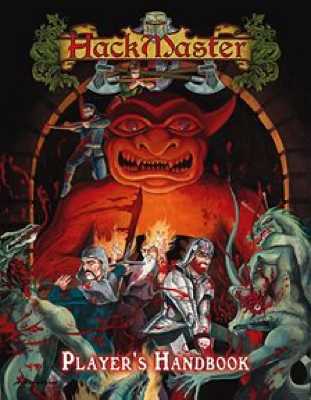
Some of you are looking quizzical now, asking what the heck is Hackmaster? Well to answer that, we have to go back to the year 1990, when Jolly Blackburn drew a cartoon strip in the pages of Shadis magazine. This strip was a peek into the lives of a group of role-players that called themselves the Knights of the Dinner Table, and their game of choice was Hackmaster, a fictional game stylized after Advanced Dungeons & Dragons, but with humorously tongue-in-cheek elements.
Flash-forward now to 2001, with the Open Game License in effect and the d20 movement underway. Kenzer & Company, formed in 1994, gains permission from Wizards of the Coast to produce a parody of Advanced Dungeons & Dragons 1st edition called, appropriately enough, Hackmaster. The game was an immediate success among fans of the comic strip.
While it is recognizable for its source material, it has also developed its own feel and is imminently enjoyable for fans of the old Advanced Dungeons & Dragons from which it is derived. The mechanics are familiar enough to appeal to veterans, but the world and setting are unique enough to stand on their own.
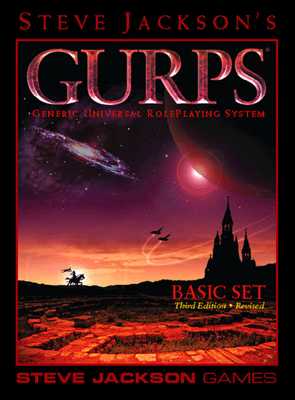
GURPS, published by Steve Jackson Games, stands for Generic Universal Role-Playing System. It was groundbreaking in that it was one of the first role-playing games to introduce a single mechanic that allowed players to play in any genre, from fantasy to horror. The Basic Rules explained the mechanics of the system, while numerous wordbooks offered details for adapting the existing rules to nearly any setting you could imagine! By 2005, over 150 wordbooks had been produced, covering everything from Stone Age adventuring to the far future of Traveller.
Today, GURPS is in its 4th edition and the rules, while remaining fundamentally the same as they were in the 1st edition, have been streamlined and simplified. GURPS 4th edition was released in 2005 and already has over 50 supplements in print, in addition to being completely compatible with the dozens of 3rd edition supplements that exist.
For my money, GURPS is all about realism. Certainly, it can be played as a very heroic, action-oriented game, but at its heart, it is all about realism. Firefights in GURPS tend to be deadly, and you won’t find many rules for disregarding inconveniences like the laws of physics. Whether you’re seeking a set of guidelines that will keep your players on the straight-and-narrow or a game that lets you mix genres at will, GURPS won’t let you down, and thus earns a solid 4th place on our pick list.

A newcomer to the gaming scene, Savage Worlds debuted in 2003. Like GURPS, it is intended to be a multi-genre system that is billed as “Fast, Furious, Fun!” In fact, every aspect of the mechanics seems to be aimed towards that mantra. Character attributes, of which there are only five, are expressed as types of dice (four-sided, six-sided, eight-sided, etc.). Skills are quantified in the same manner and are very broad and interpreted very loosely. Character creation takes but a few moments of time.
Making a skill check is as simple as rolling the die-type equal to your skill. If you roll a four of higher, you succeed. It really is that simple. Player characters tend to get a few advantages, such as the ability to “ace” die rolls (if the maximum possible result is rolled, roll again and add the total of the two rolls) in order to gain “raises,” which in turn allow greater degrees of success. Combat initiative is determined with a standard deck of cards with the jokers left in.
In all, with a strong core mechanic and the support of some dozen or so setting books, the Savage Worlds system is a popular and worthy successor to the more realistic and detailed GURPS system. It takes a little getting used to the idea that shooting lets you fire everything from a sling to a rocket launcher, or drive encompasses not just cars, but trucks, bicycles, tractor-trailers, and tanks. The whole idea is “Fast, Furious, Fun!” Once you accept that, the game becomes an ideal way to kill an evening or three.
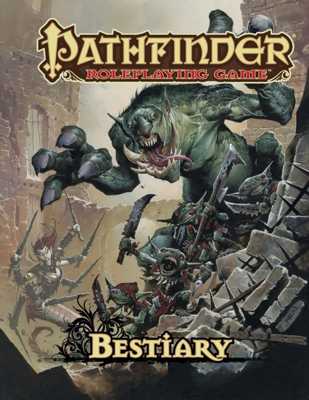
Pathfinder grew as an expansion of Dungeons and Dragons 3.5. It takes the best of everything that 3.5 had to offer, fixes some of the more outstanding problems, and presents an entirely new setting that breathes new life into the familiar game system. The result is a unique campaign world with a rich backstory, a plethora of new options for familiar characters, and plenty of room to grow and expand.
It uses a simple mechanic; just roll a twenty-sided dice (an icosahedron, dont’cha know?), add in any applicable modifiers, and compare the result against a target number either assigned by the Dungeon Master or a table of typical target numbers. If you beat the target number, you succeed at the action.
For me, what makes Pathfinder so cool is the campaign world that they have established. If it is a common fantasy trope or a real-world culture, the Pathfinder world has an analogue to it. A county of elves? Got it. An India-like setting with maharajah? Yep. A vast and dark jungle region? Right here. A land of samurai and ninja? You know it. A proud warrior culture that raids other lands? Uh-huh.
In short, Pathfinder offers you all the adventure you could ever want or need, along with a familiar, but original way to play!
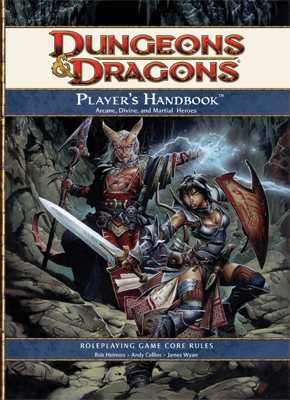
Did anyone doubt that this would be in the number 1 slot? If so, shame on you. Love it or hate it, there can be no contest that Dungeons & Dragons remains the bestselling and most popular role-playing game.
Dungeons & Dragons got its start back in 1974 as the brainchild of Gary Gygax and Dave Arneson. The pair often played miniature war-games and decided to give them a unique slant, placing them in a fantasy milieu and focusing on individual characters as opposed to entire troops. The game was an instant hit, and the hobby was underway. Thirty-four years and ten revisions later, the game has evolved to what it is today.
From its roots, the core of Dungeons & Dragons has remained fundamentally the same, but the mechanics have undergone sweeping changes with each new edition of the game. This has caused some players to turn away from newer editions, continuing instead to play their favorite edition. Only just recently, a fifth edition of the game was announced (this will actually be the 11th revision) as being in early stages of production.
Throughout its long history, the venerable Dungeons & Dragons game has seen plenty of controversy. Particularly in the mid-’80s, the game came under fire from religious groups and concerned parents and was accused of everything from teaching children witchcraft to urging players towards suicide. In fact, far from what has been shouted about in the media, the game actually offers a great many benefits, including sharpening math skills, social interaction with peers, and developing imagination.
Though the latest release of the game (4th Edition) has been criticized as being “too videogame-like” and too far removed from the origins of the game, it has been promised that the 5th edition will return the game to its roots. No one knows what the future holds, but for now, the game remains at the top of the pile.

